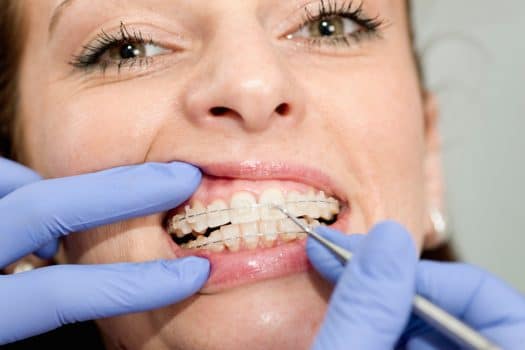The Only Guide to Causey + Hall Orthodontics
The Definitive Guide to Causey + Hall Orthodontics
Table of ContentsCausey + Hall Orthodontics Can Be Fun For EveryoneFascination About Causey + Hall OrthodonticsThe Main Principles Of Causey + Hall Orthodontics Causey + Hall Orthodontics Can Be Fun For EveryoneThe Main Principles Of Causey + Hall Orthodontics Not known Facts About Causey + Hall Orthodontics
What is the difference in between a dentist and an orthodontist? To address a concern that is often asked, both dental professionals and orthodontists aid patients get far better dental wellness, albeit in different ways. It helps to remember that dentistry is an instead wide scientific research with different clinical field of expertises. All dental practitioners, consisting of orthodontists, treat the teeth, gums, jaw and nerves.Orthodontists and dental practitioners both give dental treatment for individuals. Orthodontists can work in a dental workplace and offer the exact same treatments as various other dental practitioners. You can think of both doctors that deal with gum tissue and teeth problems. The major difference is that ending up being an orthodontist needs a certain specialized in treating the imbalance of the teeth and jaw.
An orthodontist is a dental professional that has gone through training to specialize in the diagnosis, avoidance and therapy of irregularities in the jaw and teeth. Their training includes fixing these existing problems. They can additionally identify potential problems in teeth positioning that may establish when problems are left untreated. Orthodontists can help individuals of any ages - https://filesharingtalk.com/members/599402-causeyh1orth.
How Causey + Hall Orthodontics can Save You Time, Stress, and Money.
This includes all the needed education to come to be a basic dental practitioner. According to the American Pupil Dental Association (ASDA), it suggests you will need to have either a Physician of Medication in Dental Care (DMD) or a Physician of Dental Surgical Treatment (DDS). To put it simply, orthodontists need to complete oral college and afterwards get an orthodontics specialized education and learning.


Other than the orthodontist, we typically see assistants working with these oral experts in their centers. What is an orthodontist assistant called?
What Does Causey + Hall Orthodontics Do?
In enhancement, we use adjustable therapy timetables, versatile settlement alternatives and a fun, satisfying experience.
An orthodontist is a dental practitioner educated to diagnose, prevent, and deal with teeth and jaw irregularities. They correct existing conditions and are trained to determine issues that might develop in the future. Orthodontists collaborate with people of any ages, from youngsters to adults. People commonly link a best smile with healthiness.
, yet not all dental professionals are orthodontists. They focus on two locations: How to appropriately and securely relocate teeth Just how to correctly direct advancement in the teeth, jaw, and faceOnce an orthodontist has actually completed training, they have the option to become board certified.
Causey + Hall Orthodontics for Beginners
Misalignment, or malocclusion, is one of the most common factor people see an orthodontist - family orthodontist. It is genetic and is the outcome of dimension distinctions in between the upper and lower jaw or in between the jaw and teeth. Malocclusion causes tooth overcrowding, an irregular jaw, or irregular bite patterns. Malocclusion is normally treated with: Your orthodontist affixes metal, ceramic, or plastic square bonds to your teeth.
If you have just minor malocclusion, you may have the ability to utilize clear dental braces, called aligners, as opposed to typical braces. Some people need a headwear to assist move teeth right into line with pressure from outside the mouth. After dental braces or aligners, you'll need to use a retainer. A retainer is a custom device that maintains your teeth in location.
They're frequently utilized on youngsters. They can produce added space in the mouth without needing to pull teeth. If you have a major underbite or overbite, you may need orthognathic surgical procedure (also called orthodontic surgical treatment) to extend or shorten your jaw. Orthodontists use wires, medical screws, or plates to support your jaw bone.
The Ultimate Guide To Causey + Hall Orthodontics
During your first orthodontic appointment, you'll likely have: An oral examPhotos taken of your face and smileDental X-raysPanoramic (360 degree) X-rays of your face and headImpressions to develop molds of your teethThese examinations will assist your orthodontist understand how to wage your treatment. An orthodontist is a dental practitioner that's had training to treat your teeth and jaw.
Orthodontists are dental professionals but not all dental professionals are orthodontists. Orthodontists are focused on your bite, or the way your teeth fit with each other, and the straightness of your teeth.
Unknown Facts About Causey + Hall Orthodontics
Ever before questioned how stars always appear to have perfectly lined up teeth? The answer often depends on the experienced hands of an orthodontist - orthodontics. What exactly does an orthodontist do? Orthodontists are dental experts who concentrate on correcting abnormalities in the teeth and jaws. Their competence goes past just producing a stunning smile; it reaches improving your total oral health and wellness and feature.

Clear aligners, like Invisalign, are a prominent option for individuals seeking a more very discreet therapy option. These removable trays are customized to gradually shift the teeth's placement. Headwear may be utilized together with dental braces or aligners useful content to use extra targeted forces, especially for correcting jaw disparities. In situations of narrow jaws, palatal expanders can be used to develop area for proper tooth alignment.